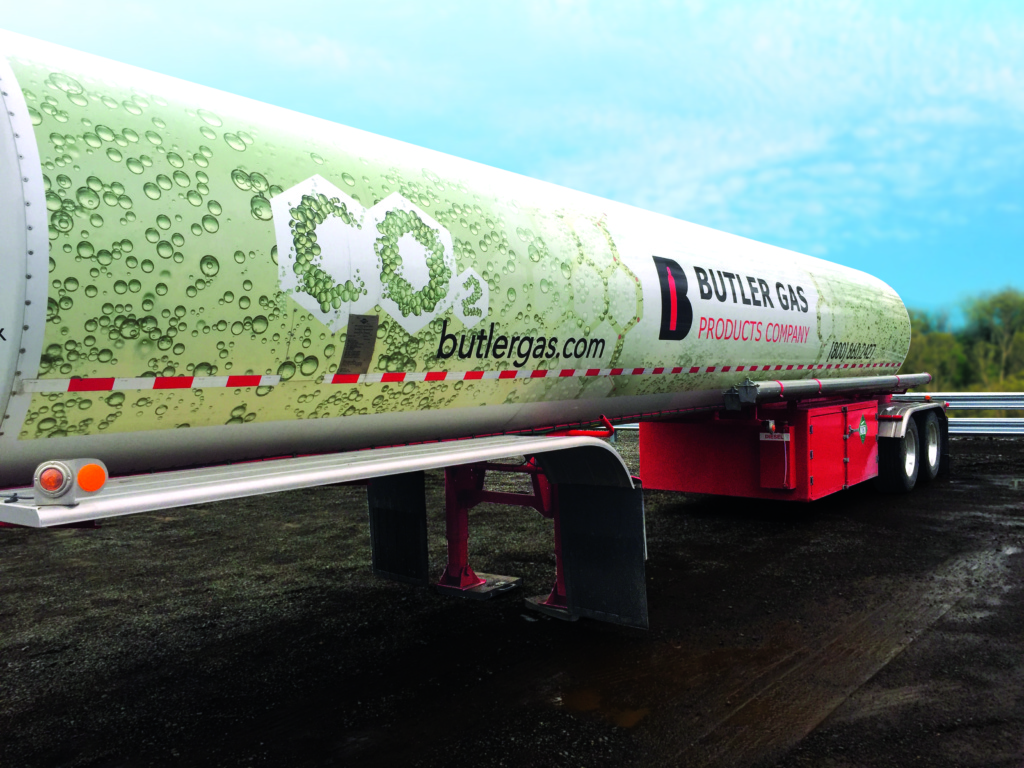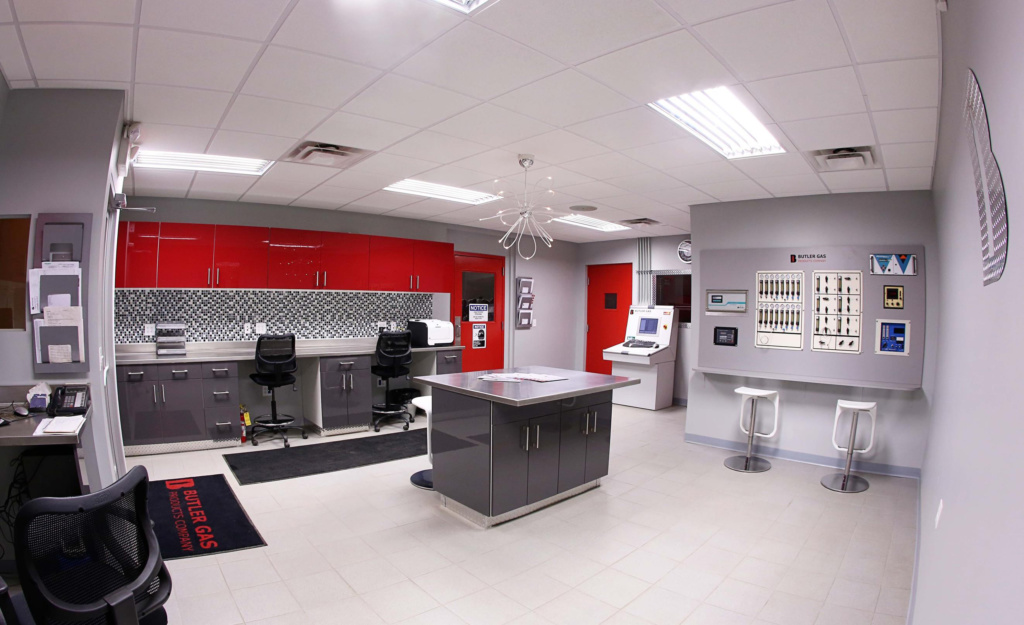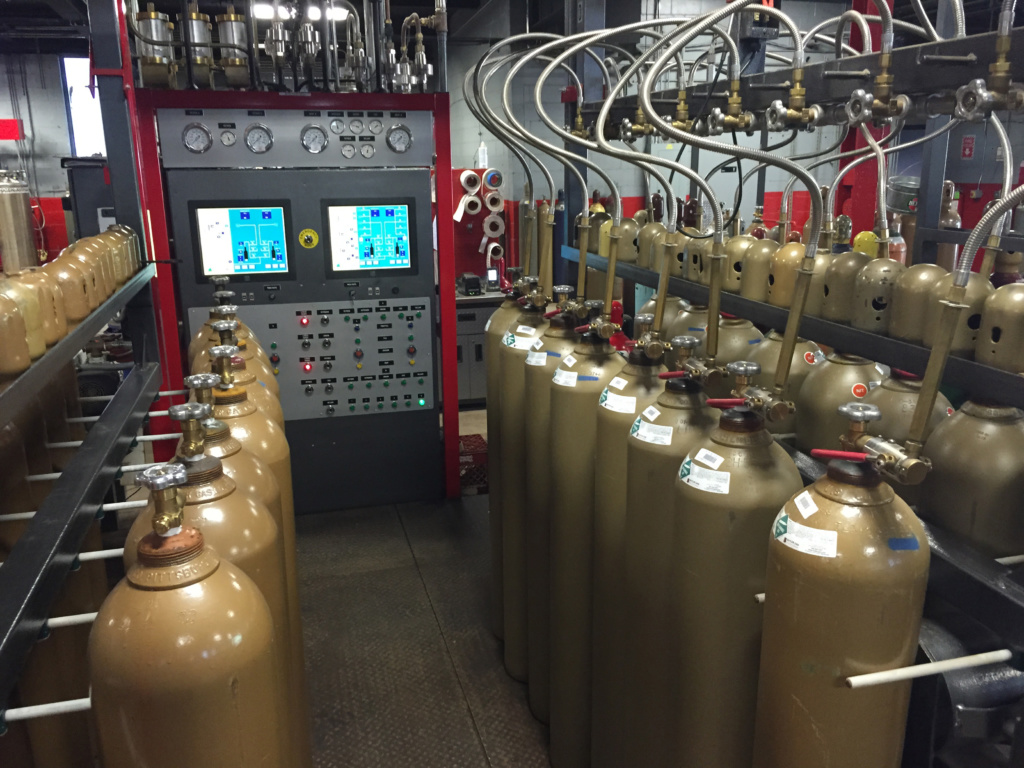The hallmark of many independent gases and welding distributors is family ownership. For Butler Gas Products (BGP) of Pittsburgh, 2018 marks its 70th year in operation and the continuation of a family business with a dynamic father-daughter team at the helm.
Chief Executive Officer and President Jack Butler is the son of Butler Gas Products founders John A. and Millie S. Butler. Jack’s daughter, Abydee Butler Moore, serves as the company’s chief operating officer and executive vice president. Together, they work side-by-side carrying on the family tradition of excellence in industrial, specialty and medical gas distribution and production.
Jack has been in the business his entire career, starting as a boy in operations. He’s pleased there’s another family member onboard to continue the business and describes Abydee’s decision to join the company with evident pride. “In 2009, we got really lucky with the number one pick in the college draft. We chose Abydee, and since then, business has never been better!” Jack says.
Abydee’s level of commitment and contributions to the business her grandfather started, and her father has continued, are reflective of that view. In addition to her work involvement, she purchased a 20 percent share in the business in 2015, joining her father and her mother, Elissa, as primary owners. Abydee furthers her scope and responsibilities this month as she assumes the title of chief operating officer, heading up all sales, service and operational activities.

Just as they provide leadership in their company, the father-daughter team serves the Gases and Welding Distributors Association (GAWDA), too. Butler Gas Products has been a GAWDA (formerly NWSA) member since 1960. Jack is a past president and still-active attendee. Abydee became first vice president at the fall 2017 Annual Meeting and is on track to be GAWDA’s 2019-2020 president.
Butler’s Hardgoods-to-Gases Transition
Over 70 years, Butler has changed its operations out of necessity within its evolving business environment. In its early years, Butler Gas Products supplied Pittsburgh’s booming steel mills and manufacturing facilities. Welding hardgoods represented 80 percent of the company’s business then.
“When steel started moving out, Pittsburgh changed and we had to change with it,” Jack says. “We made the shift from steel town to a more services-oriented community with significant medical, educational and research facilities by building the gas side of our business. Today, gas represents 90 percent of revenues.”
The company considers itself first and foremost a regional gas manufacturer and distributor. Its manufacturing capabilities include acetylene, dry ice and specialty gases. With a fleet of both bulk and microbulk transport, BGP has expansive liquid capability in oxygen, nitrogen, argon and carbon dioxide (CO2). For helium and hydrogen, the company has state-of-the-art filling capabilities.
Butler’s major markets are many, consisting of: commercial construction, manufacturing and metals, medical (biomedical, specialty gases, healthcare), research and education, oil and gas, food and beverage, and wholesale distribution. Of these the company considers its wholesale distribution business to be its fastest growing. “Wholesale plays well with our asset investments,” says Abydee.
At present, the construction, manufacturing and metals and medical sectors present growth opportunity, especially for the company’s microbulk business in 1,500-gallon tanks and under. Their fastest-growing gas markets are CO2, nitrogen and acetylene. Overall CO2 demand in the Pittsburgh area is increasing in key market segments like pH control, food chilling, beverage carbonation, welding gases and wholesale supply. BGP is also poised and ready to supply CO2 and other gases to the medical cannabis industry, which was legalized in Pennsylvania in 2017.
While hardgoods represent only 10 percent of the business today, welding continues to be a significant market and one BGP does not ignore. Industrial manufacturing and steel mills still operate in the Pittsburgh area, plus recent oil and gas activity (fracking) is driving the heavy welding market. Providing hardgoods allows BGP to offer a total supply solution to its customers, including the certified welding educator (CWE) on Butler’s staff.
Thinking Like a Manufacturer
Its acetylene business makes BGP somewhat unique among independent gas and welding distributors, and that positioning presents the company with the ability to think like a manufacturer.
BGP’s original acetylene plant was built in 1954, and then rebuilt in 1980. Jack notes, “We like making acetylene. What we do ourselves, we do well.”
Expanding on that philosophy, Butler Gas now has other manufacturing facilities. They include an industrial gas plant, a specialty gas plant and dry ice–making capabilities.
A Distributor’s Distributor
Butler Gas Products positions itself as a “Distributor’s Distributor.” Jack explains, “With our manufacturing capabilities and our bulk transport assets, we are in the wholesale business and have been for the past 20-plus years. Consolidation among major producers has helped us, especially as they have divested their packaged gas assets.”
“Our manufacturing capabilities and 70 years of asset investments mean we can supply product to anyone in our region. Our geographic proximity to our supply partners’ source plants enables us to pick up product and add value upstream. Whether we’re making dry ice, manufacturing acetylene, mixing specialty gases or trucking CO2, we become the distributor’s distributor,” explains Abydee.
BGP operates within about a 100-mile radius of Pittsburgh for end users. For bulk customers and wholesale, its geographic reach is double that, extending beyond Pennsylvania and into neighboring New York, Ohio and West Virginia.
Investing in Assets
With the gas market its primary revenue driver, BGP concentrates on opportunities on that side of the business, and in the past five years, the company has made several major investments.
From its experience as a manufacturer of acetylene, BGP knows the wholesale gas supply chain and is able to capitalize on that with its bulk liquid assets. In 2016, Butler Gas Products added a 5,400-gallon CO2 transport trailer to its fleet, which enables the company to pick up and deliver bulk CO2. This ability makes BGP more independent in feeding its dry ice manufacturing and able to provide customers with consistent gas supply. “With bulk liquid assets, we do not have to depend on the classic distribution model and can remain nimble when there are supply chain issues, like plant shut-downs, especially for CO2,” says Abydee.
BGP also completely automated and upgraded its specialty gas facility in 2013. That step was followed by the automation of its industrial gas plant in 2014. In addition to greater efficiency in packaged gas production and filling, both automations allow the company to produce more gas blends, shorten lead times and increase product offerings.
BGP began filling hydrogen with a palletized system in 2010 for both industrial and specialty gases. Helium-filling capabilities were upgraded in 2013, accompanied by the addition of a new jumbo tube trailer with a helium capacity of over 170,000 scf.
“As a gas-focused independent, if we see a niche, we fill it,” explains Abydee. “We added high-pressure filling for helium, argon and nitrogen — 3,500, 4,500 and 6,000 psi — when we recognized that there was growing demand for this, especially within our wholesale business.”
Staying Current
Butler Gas Products also continuously introduces new technology and automation in order to make operational systems and processes more efficient. Plans call for a new and more robust website to be launched this year. It will enhance existing offerings like online ordering. BGP estimates that about 10 percent of its customers now order online, and that group is steadily growing.
Believing that a great distributorship is built around its ability to deliver product, BGP is constantly looking at ways to make operations safer and more efficient. Toward this end, two types of technology are being deployed. For safety, the company uses cab cameras, which help coach drivers on how best to handle the equipment and maintain 100 percent safety. GPS monitoring software is used to improve efficiency in trip planning and to keep the fleet running on schedule. Microbulk and bulk tank levels are monitored by telemetry level gauges, with the distribution team planning fills accordingly. In addition, BGP’s asset tracking system, CYLTRAK, has been evolving since the 1980s and currently is fueled by TrackAbout. Both of Butler’s industrial and specialty gas production facilities are fully automated, as well. Its “tech bubble” extends to sales, too. The sales team uses Salesforce software, which enables the company to shorten sales cycles, increase deal closure and cut down on administrative time.
Continuous Improvement
The company is structured by a well-defined value system that has been a guiding force since the company’s founding. It has four pillars. The first priority for the company is a goal of 100 percent safety. Next in importance are the people that comprise the workforce and the company’s recognition of the need to train and empower them. The third aspect of the value system is providing excellent service to the customer. The fourth is making the company profitable. Everything BGP does is measured against these standards and priorities; and they are the basis of a continuous improvement (CI) operation mode.
Viewing operations from a continuous improvement perspective puts a unique lens on how they look at the business. “We question everything,” says Abydee. “Is it safe? Does it add value to our customers? Can we eliminate waste? Is there a better way of doing things?”
When a problem is identified, Sandy Gobrish, vice president, services and CI, builds a team to address it. That team defines the scope of the project and identifies solutions and deliverables. Jesse Pitell, BGP’s vice president of finance, is tasked with creating the measurables and monetizing the return on the solutions devised.
“We don’t worry about what we can’t control. We invest in what we do well, and we try to add as much value upstream as we do downstream. We keep our focus on customers.”
— Abydee Butler Moore
Chief Operating Officer
Goal Definition, Implementation
BGP recently introduced another strategic planning concept known as “traction,” designed to help a company better articulate its goals and navigate strategic planning. It is an entrepreneurial operating system led by a “visionary” who is in charge of the big picture and who sets the company tempo. That’s Jack in the case of Butler Gas. The second component is an “integrator,” a person tasked with connecting all the operational dots needed to get the job done. At BGP, that’s Abydee.
People the Path to Success
The Butlers believe the company’s associates are at the heart of the organization and its success. “We put a lot into people development and we believe in homegrown talent,” says Abydee. “We are proud that our industry PAR Report (performance analysis report, which is conducted nationally), in which we participate annually with the BIG Group (Buying and Information Group), puts us in the top quarter for compensation.”
Like so many distributorships, Butler Gas Products is composed of a mix of highly experienced associates approaching retirement and newer hires with lots of energy but little industry experience.

To ensure smooth transitions in its workforce, BGP has implemented succession planning at every level of operations. The company teams tenured staff with the up-and-comers, creating mentoring opportunities that work both ways. Long-term associates pass along their knowledge base. Younger workers guide older personnel through the ins and outs of the new technologies and management information systems, now including automated fill plants and iPads for every driver.
Sharing information companywide and training are other ways BGP builds an engaged workforce. The company releases internal news monthly via a posted newsletter, and external news biweekly in its e-news campaign. Communications include associate profiles, products and applications.
Additionally, the company has a systematized training program in place. Butler Gas University (BGU), founded by Barbara Glessner, Jack’s sister, educates all employees on how to operate under the “Butler Value System.” Every new associate undergoes a 45-day individualized training program. Four times a year, company-wide BGU training sessions are conducted. These hour-long seminars address a strategic issue the company is working on.
Recently, a BGU Master’s Program was added to the training curriculum. Designed for employees with high potential, this self-selecting course is open to anyone who aspires to develop their career by learning more about business and the gases and welding industry. The program graduated five employees in its first year.
Butler Gas Products uses a mix of traditional and new forms of marketing to reach its audience. Billboards still capture the attention of the customer on the road and press releases go out to local newspapers and industry publications. On the digital front, BGP considers its website to be an important marketing tool. Social media is used to promote the company along with electronic newsletters. Participation in groups and professional organizations in its region is also considered critical to BGP marketing efforts.
To stay abreast of industry trends and solutions to some of its more stubborn challenges, the Butlers are big believers in the benefits of national and global industry associations. With the “once and future” presidents leading BGP, Jack and Abydee are especially strong proponents of GAWDA. They urge distributors, particularly small and mid-sized companies, to get involved and take advantage of its consultants, its alliance with the Compressed Gas Association and its networking opportunities. The Butlers believe GAWDA is an invaluable resource and credit the association with helping them achieve success.
What’s Ahead
As 2018 begins, the answer to the question, “What’s ahead?” remains elusive to many. However, the Butlers are forward thinkers, and while they may be unsure of precisely what to expect on the industry landscape over the next 10 months, they have a 100-year strategic plan in place nevertheless.
That plan includes the view that supplier consolidation is an opportunity to strengthen its position as a distributor’s distributor. “We don’t worry about what we don’t know,” notes Abydee. “We invest in what we can control, and we try to add as much value upstream as we do downstream. We keep our focus on customers.”
Looking forward, Abydee continues, “We work hard to continuously develop our distribution assets. Investing in the gas business supports our vision of being the best regional manufacturing distributor.”
With its continued focus on safety, people, customers and profits, Butler Gas Products’ vision of being the best in the region appears to be very much on track — and still in the competent hands of Butler family members — 70 years after its beginnings.
Agnes H. Baker is a freelance writer with more than 15 years of experience covering the industrial, medical and specialty gas industry. Based in Massachusetts, she is at: [email protected].










